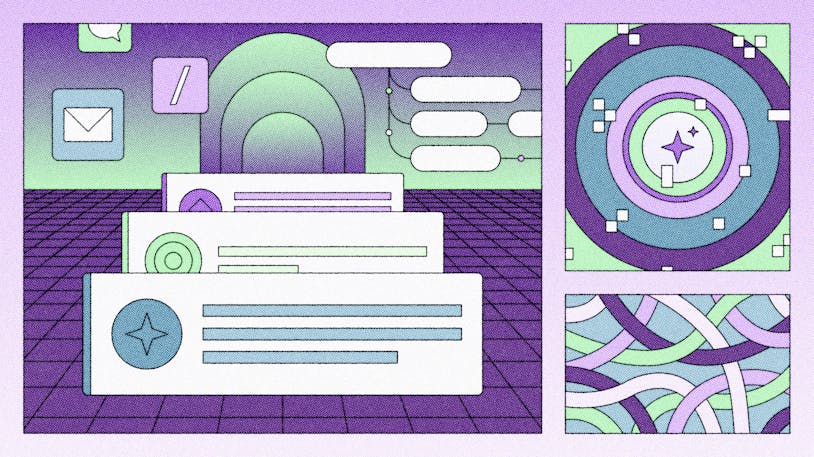Customer Support: Definition, Importance, and 8 Essential Tips


The customer support industry is in the midst of a renaissance. Customer support as a specialty is coming into its own, offering companies a competitive advantage that’s difficult to copy.
Modern customer support isn’t the same thing as customer service, although it employs customer service techniques. And it’s not the same thing it was 50, 20, or even 5 years ago — the definition is still evolving.
In this post, we're going to take a look at the world of modern customer support, what it is, why it's important, how it's changed over time, and how it differs from the stereotypical view of customer service.
A brief history of customer support
Before call centers and social media, local business owners often knew their customers really well. In the video below, Help Scout's Emily Triplett Lentz discusses the principles of old-school customer service with her father, who ran a butcher shop for 37 years.
And while local businesses often knew their customers well, customer service during that time wasn't perfect. Customers had limited options for purchase and support, few ways to educate themselves and solve their own issues, and scant resources for avoiding businesses with subpar products and poor service.
Customer service has undergone some dramatic changes since that time, starting with telephone-based business and the advent of call centers in the 1960s. Suddenly, companies were able to resolve customer issues (or at least nominally offer service), if somewhat impersonally, on a larger, more efficient scale.
That trend surged dramatically in tandem with increased competition and pricing pressures, and by the 1980s, many companies were offloading any service extras that couldn’t be directly tied to their bottom lines.
But more widespread access to the internet changed things again. Between social media, online forums, and review websites, today's customers have a wealth of resources for learning more about the businesses they're considering and the products they offer, and dissatisfied customers can reach many more people with their support horror stories.
That has created a new era of customer support, one where there is a much greater need for companies to stand out by providing great service.
Today, the companies that are coming out on top are those that understand the ROI of great support and treat exceptional customer support as a feature instead of an inescapable cost.
Try the customer support platform your team and customers will love
Teams using Help Scout are set up in minutes, twice as productive, and save up to 80% in annual support costs. Start a free trial to see what it can do for you.
Try for free
A new definition for customer support
At Help Scout, we define modern customer support as the act of providing timely, empathetic help that keeps customers' needs at the forefront of every interaction.
Instead of the stereotypical view of customer service as a cost center, customer support teams are the face of the company. They play a critical part in sales and word-of-mouth marketing, work side-by-side with product teams, and have a seat at the table when it comes to company decision making.
Modern customer support is a much more all-encompassing role that plays a part in the entire customer lifecycle — from acquisition to retention.
| Stereotypical Customer Service | The New Customer Support |
|---|---|
Viewed as a cost center. | Viewed as the face of a company, a critical component of sales and word-of-mouth marketing. |
Disempowered agents who require managerial approval for tasks customers should be able to accomplish themselves. | Self-service first; skilled and empowered agents can help with more complex questions and requests. |
Requires customers to call during specified business hours and often wait on hold for help. | Round-the-clock help via multiple channels: knowledge base documentation, email, phone, chat, social media, etc. |
Call centers relegated to cubicles or outsourced to other locations/countries. | Works side-by-side with product teams, has a seat at the table in company decision-making. |
Career growth limited to moving into managerial positions. | Myriad opportunities for growth and development. |
Operational metrics tied to cost-cutting: first response times, call resolution times, etc. | Holistic metrics tied to company-wide goals: NPS, customer satisfaction, etc. |
The new customer support applies the principles of customer service in helping customers solve problems and make decisions but, in addition, functions as part sales, part tech support, and part customer success.
Why the new approach to customer support is key to growth
In the self-service internet age, customers don’t need go-betweens to assist them with what should be simple functions, like canceling their account.
Many businesses continue to direct their energies toward protecting revenue by putting these speed bumps in place, but they waste time that could have been spent solving a problem that only a human can solve.
And what’s more, people have grown to expect self-service — if you let them get to a point where they have to reach out, you’ve gotten in the way of usage and adoption.
Customer-centric companies remove a lot of that friction by automating that which can be automated and freeing their most valuable resource — their team — to work on problems that can’t be automated away. Hence the shift away from hiring your average “people person,” toward hiring highly skilled, empathetic problem-solvers.
Even the call centers of yore are making way for contact centers: “partners in revenue generation and customer experience, populated with highly educated staff that have career paths and incentives beyond calls-per-minute.”
8 essential tips for delivering great customer support
While there are many different approaches to delighting your customers, here are our eight best ways for company leaders to enable their teams to deliver great customer support consistently.
1. Make sure your team has the right tools
While it's certainly possible to run your entire support operation using a shared Gmail or Outlook mailbox, it's not always the best way to set your team up for success. Dedicated customer service software is often a better choice for enabling your team to deliver excellent support.
Tools that have been designed specifically for support teams offer features like shared inboxes, built-in help centers, saved replies, automated workflows, duplicate reply prevention, customer relationship data, and even AI technology.
These features help your team deliver personalized, fast, and expert service with every customer interaction.
2. Offer self-service support options
Sometimes, delivering excellent customer support means making it easy for customers to help themselves. In fact, 81% of consumers attempt to resolve issues on their own before reaching out to customer support, and 71% want the ability to solve most issues on their own.
Make sure you have a knowledge base that includes answers to frequently asked questions and how-to articles that walk customers through the steps required to solve common problems.
Next, make it easy for customers to find that documentation by optimizing your content for search (both within your knowledge base and on the major search engines), structuring your knowledge base logically, or adopting a tool like Help Scout's Beacon that surfaces relevant content when customers initiate live chat.
3. Hire for key support skills
Some of the most important skills for support professionals are patience, attentiveness, the ability to communicate clearly, a willingness to learn, and empathy.
Your team needs to be composed of people who want to learn everything there is to know about your product because they genuinely want to help your customers succeed. They must be willing to dig in to troubleshoot issues, solve problems outside of their domain, and actively listen to customers to determine what they really need.
To attract skilled professionals, you'll have to pay rates that are attractive to skilled professionals, and you'll need to offer career advancement opportunities that are far more varied than simply moving into a team management role.
4. Give your team authority to use their skills
Having to check with management to solve all but the most basic requests will disempower even the most competent agents. In addition to being skilled enough to answer complex questions, they must also be empowered to solve requests on their own.
For example, the Ritz-Carlton is well-known for its $2,000 rule: Everyone on their customer service team can spend up to $2,000 per guest, per incident to resolve guest issues.
But empowering your team doesn't have to be quite so extravagant; it can also be as simple as documenting policies and guidelines in a place that's easy for everyone on your team to access.
The guidelines you document don't even have to be specific. American Express' Jim Bush found that guidelines as simple as "use creative (and where possible, inexpensive) methods to delight customers" encouraged employees to come up with and share lots of inexpensive solutions to customer problems.
5. Foster effective problem solving
The call center customer service teams of the late 20th century were held to operational metrics tied to cost-cutting, such as first response times and call resolution times. But providing excellent customer support means focusing more on holistic metrics that are tied to company-wide goals, such as customer satisfaction and NPS.
Solving requests in a reasonable time frame is still important. But great customer service beats speed every time.
Customers understand that more complex queries take time to resolve. There’s a difference between the time it takes you to respond and the speed at which you resolve their problems. They’ll spend as much time as it takes to resolve their issues.
Encourage your team to get back to customers in a timely fashion, but don't hold them to metrics that make them feel rushed to close requests before a customer’s issues are completely resolved.
6. Make it easy for customers to get support
If you search Google for "(company) customer support," in most cases Google populates a featured snippet containing the contact information for that company.

There's a reason for that: Some companies bury their contact information to make it difficult for customers to get in touch when they have problems.
Don't make your customers turn to Google to find out how they can get in touch with your support team. Make it easy for them by displaying your contact information in logical places on your website. Also, consider meeting them where they are by offering live chat support within your product or accepting support requests over social media.
Help Scout's live chat tool, Beacon, offers a feature called modes that surfaces relevant content from your knowledge base before putting customers in touch with your support team. This lets you prioritize self-service to reduce support volumes while still making human help available.
7. Don't prioritize automation over personalized support
Automation is a great addition to your team's toolkit because, when used correctly, it eliminates some of the mindless, repetitive tasks that keep your support agents from delivering attentive, personalized service. And in some cases, AI tools are even great for customers because they provide quick, instant answers to simple questions.
But when used incorrectly, chatbots can easily become the voice-activated phone menus of the online customer support age. They misunderstand questions, pointing customers to the wrong resources, or send customers around in circles trying to solve problems that require critical thinking and other exclusively human skills.
While customers like quick, easy answers, they expect more human service when it comes to solving complex problems. They don't want to be referred to as a ticket number, don't want to repeatedly provide long explanations as they're transferred to different teams, and don't appreciate generic responses to genuine concerns.
Make sure that the tools you use make it easy for your team to see who they're speaking to before they respond — and that those tools don't get in the way of your ability to provide personalized, human support when it's needed.
8. Use data to find ways to continually improve
Are your customers struggling to find the answers and how-tos you've documented in your help center? Are there specific questions your team spends time answering over and over again that could be easily solved with better user onboarding or in-app tips? The answers to these questions are often readily accessible in your data.
Often, the best customer support is proactive. Your conversations with customers offer a tremendous amount of insight into what they're struggling with and how you can resolve issues so customers don't have to continually reach out for support.
This is a big reason why it's crucial for customer support leaders to be involved in company decision making. They're in the queue every day talking to customers and making an effort to understand what customers need, and they're usually the most familiar with the tools you use to get the data you'll need to make informed decisions.
The evolution of customer support
The definition of customer support is still evolving, but many signs point toward support morphing into a branch of marketing and growth. Why? Companies who fail to offer quality support will lose their customers to those that do. And the more closely support is tied to your product, the better your product becomes.
“If the support team isn’t 100% embedded in the product you’re trying to market, support suffers,” says Help Scout support lead Justin Seymour. That alignment with product lets us focus on helping customers get the most out of Help Scout’s features, versus being bogged down with revenue expectations.
Rather than sell something to help you achieve your goals, our model is to help you achieve your goals first so you’re happy to pay for what we offer.
Bottom line: Customer support is a feature. Organizations that take support hires as seriously as engineering hires have a greater shot at success than those that don’t.
The Supportive Weekly: A newsletter for people who want to deliver exceptional customer service.







